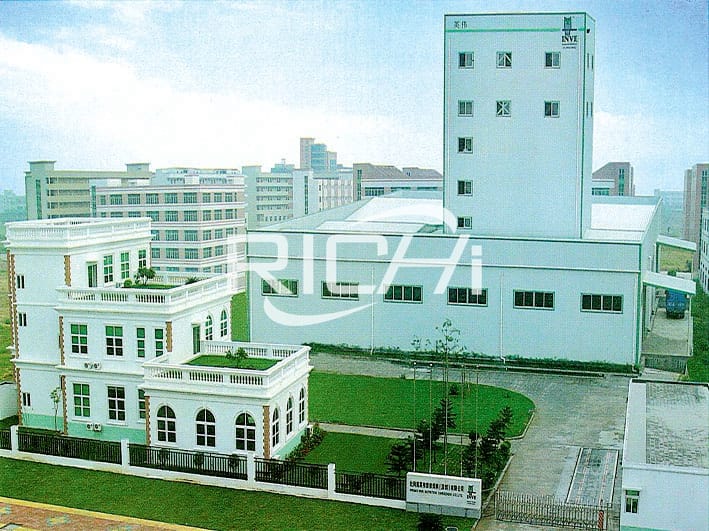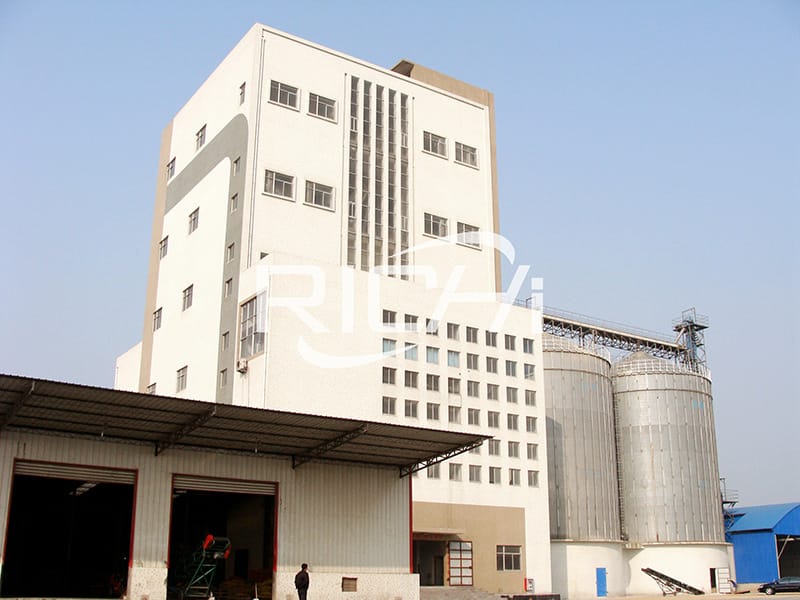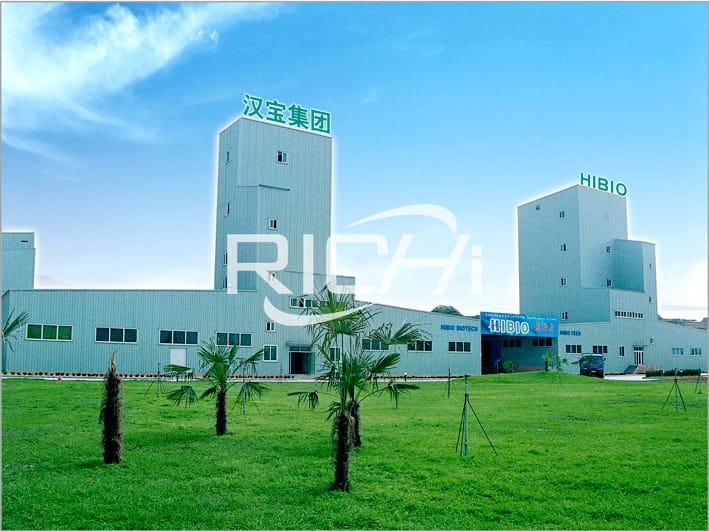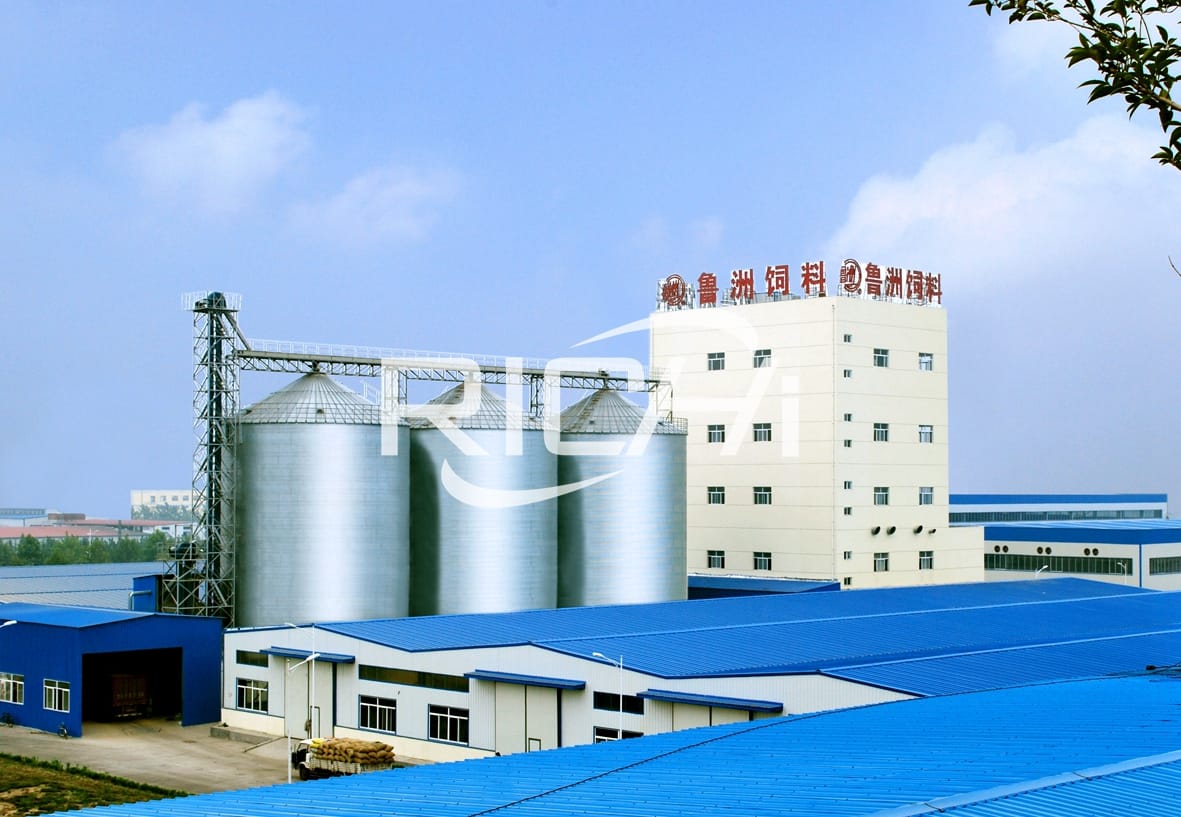Points for attention in cleaning up different production equipment in 10-20tph complete animal feed pellet manufacturing plant
Animal feed processing equipment cleaning is a headache for 10-20tph large scale feed mill factories, especially for 10-20 ton per hour automatic animal feed mill plants with busy feed production tasks. But if this problem is ignored, feed products will not be able to guarantee long-term quality stability. For most ce high quality 10-20 ton per hour animal feed production factories, many products are high in oil content, and once a problem occurs, the consequences are more serious.
In fact, almost all feed making equipment needs to be cleaned after a period of use, some need to be cleaned outside, and some need to be cleaned both inside and outside. What we are talking about here is the part that can affect the quality of the product, which is mainly concentrated inside the animal feed making equipment.
Because people usually can't see the inside of the device, they don't know what's inside. They don't pay attention to inspection and are often ignored. If the feed production management department does not have a practical clean-up plan and unremitting supervision and execution, the equipment clean-up work will often be anticlimactic. It is understood that some feed manufacturing companies do not even know how to clean the animal feed production equipment because they do not have professional management personnel.
In this article, RICHI puts forward the following feed maker equipment cleaning opinions according to the impact of equipment cleaning on product quality, hoping to help everyone.

1. Cleaning up the animal feed mixer machine
A layer of material will accumulate inside the feed mixing machine after a period of use. If the grease content is high, a thick layer of material is often accumulated in one shift. In addition to the fuel injection device, some feed mixers have Liquid antifungal spray nozzles and liquid methionine spray nozzles will accumulate materials on the inner wall of the animal feed mill mixer, next to the nozzle, on the shaft and blades, and on the door. Therefore, the general feed pellet making factory cleans up after the end of the shift, turns off the power before cleaning, and the cleaner locks the knife by himself, puts the key in his pocket, and sticks specially made tools to the inner wall, nozzles, and paddles. The material layer on the leaf and shaft is scraped off. After cleaning, open the door of the mixer and clean the door and sealing ring. The materials that are cleaned up on the day can be returned according to the quality control requirements. If the time is too long, the materials with peculiar smell and mildew cannot be returned to the machine and be scrapped. Some feed mixing equipments are relatively large and require people to enter before they can be cleaned up. At this time, the safety work is particularly important. In addition to locking, it must be supervised by a special person. After cleaning, the person who enters the mixer is responsible for opening the lock of the power box door. Fodder mixing machine cleaning frequency: 1~3d cleaning is appropriate.
2. Pelleting system cleaning
The granulation system is composed of an animal feed pelletizer machine, a feed pellet cooler, a feed hammer mill crusher and a grading screen. Among them, the conditioner part and the granulation chamber part of the animal feed granulator need to be cleaned most carefully. Because the steam enters the above parts and acts on the feed, it will increase the moisture, heat and viscosity of the feed, and it will easily adhere to the inner wall, shaft, and blades of the conditioner. The structure of the granulating cavity is complicated, and there is accumulation of material in almost every place. The animal feed pellet making machine conditioner is more difficult to open, so the frequency of cleaning is generally not high. In some feed factories, the conditioner is broken down and cleaned once.
In order to ensure product quality, I think it is appropriate to clean up once a week to half a month. If the machine is shut down for a long time, it should be opened and cleaned to prevent the sticking of the feed from becoming moldy. The pelleting cavity should be cleaned thoroughly after the oil is applied at the end of each shift. During the variety adjustment, if the two varieties are cross-contaminated, they must be cleaned. After making the next variety. After the granulation is finished, wait for the feed pellet cooler to be emptied, and a person enters through the inlet hole, cleans the four corners and the residual material on the sieve plate with tools such as wooden sticks, and wipes the four walls; the leveler and the glass Dust and accumulated materials are completely removed. Material is easy to accumulate at both ends of the animal feed crusher.

3. Cleaning the permanent magnet cylinder
The permanent magnet cylinder is demagnetized, such as iron. Iron filings have an impact on feed varieties and are harmful to equipment. Failure to clean up in time may cause damage to the equipment, and may also affect the passability of the feed and cause blockage. It is recommended to clean up after each shift. The impurities removed from the permanent magnet cylinder shall be treated as waste.
4. Cleaning of the primary cleaning screen, finished product inspection screen, and grading screen
The primary cleaning sieve, finished product inspection sieve, and grading sieve are all cleaning, removing impurities, and grading, and they are all easy to block. Especially for the initial cleaning screen, when the amount of impurities is large, it is easier to block and needs to be cleaned in time. Generally, open the above-mentioned sieve at the end of each shift to clean up the rope, impurities, and lumps inside, and keep the sieve room clean and the screen holes are not blocked. The cleaned-up materials will be processed according to the actual situation, and some of them can be used.
5. Cleaning of pulse bag filter and cyclone dust collector
Pulse bag dust collector and cyclone dust collector are equipment for collecting dust. The dust is absorbed on the surface of the cloth bag or transported to the silo or bag with the air shutter. After a long period of operation, the inner or outer wall of the bag will be thick. A layer of dust (more serious when the pulse is insufficient or invalid), it is recommended to open the door after the end of each shift and clean it with wooden sticks and compressed air. The cyclone dust collector is not easy to open. Check the glass observation hole every day to see if it is blocked and if the air shutter does not turn. If the above problems occur, they need to be dealt with in time. After the accumulated material is cleaned up, use a rubber hammer to tap the brakes and cones. Body, shake down the material on the inner wall of the backlog. Under normal circumstances, the dust part of the Chakron can be used, and the moldy and deterioration must be scrapped.

6. Cleaning up the silo
Silos, including cylindrical steel silo, chamber bulk silo, silo to be crushed, batching silo, silo to be pelletized, finished product silo, buffer silo, etc., are storage equipment for storing a certain amount of raw materials, all of the above silos All need to be cleaned up, but the cleaning requirements are also different according to the materials loaded and the frequency of use. Cylindrical steel silo, house-type silo, bulk silo, generally store granular raw materials such as corn, wheat, soybean meal, etc. Before the new silo is used, enter the silo to connect the steel plate and the cement foundation or the screws left on the ground. Sweep the mixed strips, cement blocks, etc., clean up the garbage and other debris between the discharge port and the scraper, and then wash them with rice chaff and corn until they are clean and free of debris before storing. During use, empty the warehouse regularly, enter the warehouse to check whether the cylindrical warehouse is leaking, clean up dead corner materials, agglomerated materials, and moldy materials, clean them up, and load new materials.
The cleaning frequency is appropriate once every 1-2 months. The warehouse to be crushed, the batching warehouse, the warehouse to be granulated, and the finished product warehouse are generally inside the workshop. Most of them are assembled by welding steel plates. The square shape is mostly. Therefore, the corners, the upper part of the cone, the upper side of the angle iron, and the rivets Some silos have more dead corners. This part of the material does not flow for a long time and sticks to the wall of the silo. Some factories use high-moisture raw materials. After crushing, the hot air gathers on the top of the silo to absorb the Dust is often very thick and difficult to be found. It is only noticeable when it becomes moldy and falls into the silo. The above-mentioned silos must be checked frequently, and the empty silos should be cleaned when necessary. After the empty silos are cleaned, it is recommended to use a compressed air machine to tie the bamboo poles or other poles that can be sleeved and blow away the residual material everywhere with compressed air, and then turn on the scraper The auger cleans the remaining materials, and then washes the warehouse with fresh raw materials. The cleaned materials and the washed warehouse materials can be used according to the quality control opinions.

7. Hoist conveyor equipment cleaning
There will normally be some accumulation of material in the base of the hoist. The base of the self-cleaning hoist will accumulate a lot less material, and the base of the square type accumulates a lot of material, so it should be cleaned every once in a while. It is recommended to increase the raw corn and wheat grains. The machine is cleaned once a week, the powdery raw materials are cleaned once a day, and the products that cannot be cross-contaminated are cleaned every time they are changed. The bottom of the horizontal and vertical conveying equipment and the pipe wall have dirty materials, but the above equipment in normal use, the material is flowing inside, only the two ends will not flow, the cleaning interval can be longer, and cleaning once a month . During normal refueling, it can be cleaned by washing the warehouse, or it can be processed in the form of head and tail. The accumulation of material on the pipe wall can be shaken with a rubber hammer or blown down with compressed air.
8. Cleaning the feeding port
At the end of the feeding, the raw materials should be cleaned up, and all of them should go to the next feed line production process. The materials sticking to the feeding fence, the wall of the pipe, and the inside of the weighing hopper should be cleaned at regular intervals. It is best to clean up once a day, at least 3d once.
9. Cleaning of liquid adding equipment
Oil tanks, molasses pots, liquid antifungal agent pots and their attached spray pipes, pump filters, nozzles, etc. should be cleaned regularly. Raw materials such as oil, molasses, and liquid methionine are relatively easy to deteriorate, so they must be cleaned within a certain period of time. Clean up once inside. It is very important to formulate a complete cleanup plan according to the characteristics of these raw materials, weather, storage conditions and other factors. It is recommended to clean up every 3 months in the first and fourth quarters. Once, every 1-2 months in the second and third quarters. It is relatively difficult to clean the oil tank. If necessary, it should be cleaned with hot water, detergent, and caustic soda. The molasses, liquid methionine, and liquid anti-mold agent can basically be cleaned. The cleaned equipment should be cleaned with cleaning fluid and dried before use.
10. Cleaning up other equipment places in the 10-20 ton per hour animal feed production plant
The 10-20 ton per hour complete animal feed mill factory is full of dust. Every equipment may stick to dust, raw material dust, oil, water and other substances. Therefore, equipment not listed in this article does not need to be cleaned, such as animal feed grinding machines, which also need to be cleaned regularly. In addition, dust and powder on the floor, walls, and windows of the animal feed making plant affect the quality of the product, and will be brought to the feed factory if you are not careful. Therefore, the cleaning of the site is also very important.
From the above, the animal feed processing machine in the 10-20t/h animal feed manufacturing line factory basically needs to be cleaned. Richi Machinery lists most of the equipment here, highlighting the necessity of cleaning these animal feed producing equipment and the conventional cleaning methods. However, in actual work, due to problems in the arrangement, many feed equipment were not cleaned up in time, resulting in unstable product quality, continuous complaints, and very difficult to find the cause. Therefore, 10-20tph big capacity animal feed mills must pay attention to this issue and require the cooperation of the production department to formulate a practical equipment cleaning plan, track the cleaning process, keep a record of the cleaning, implement the equipment cleaning work in practice, and produce qualified products with stable quality.
If you want to built one complete pellet production line in your country, pls send the inquiry to us. We will customized design according to your requirement.



